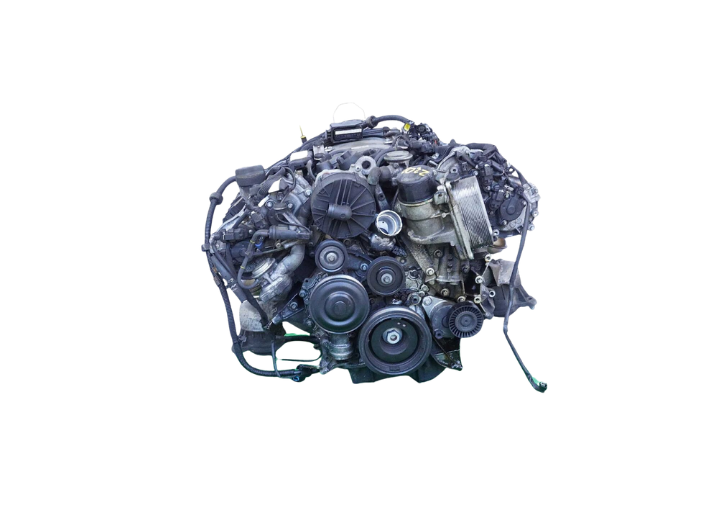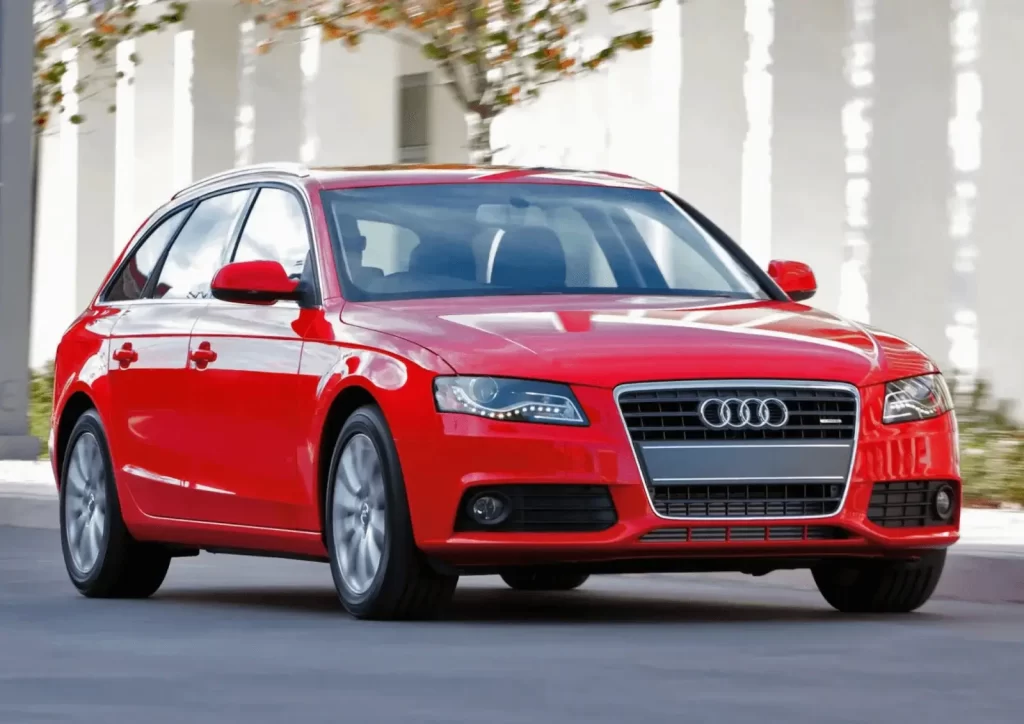
The Mercedes-Benz E350 is one of the most well-rounded and sought-after executive sedans in the world. It blends luxury, technology, and performance in a spacious cabin and a powerful 3.5L V6 engine. However, despite its reputation for comfort and reliability, the E350 isn’t immune to mechanical and electrical issues arising from wear and tear.
Over time, owners frequently report oil leaks, rough shifting, suspension wear, and electrical malfunctions, particularly in models from 2007 to 2016. Most of these problems stem from normal wear and tear but can escalate into costly repairs if left unaddressed.
With routine maintenance and timely diagnostics, the E350 remains a dependable luxury sedan. This guide explores the most common issues E350 owners face, the symptoms to watch for, and how Southside Euro’s technicians can help diagnose and fix these problems before they worsen.

Common Mercedes Benz E350 Problems
- Engine Oil Leaks
- Rough Shifting & Transmission Issues
- Suspension Problems (Rough Ride, Vibrations)
- Electrical System Failures (Warning Lights, Malfunctioning Features)
- Check Engine Light Due to Faulty Camshaft Adjuster Solenoid
- Brake Problems (Soft Pedal, Squeaking Brakes)
- ESP Inoperative Error
Engine Oil Leaks
One of the most common complaints among Mercedes Benz E350 owners is oil leaks, often resulting from worn-out gaskets, faulty oil seals, or a cracked oil pan.
If left unattended, it can lead to low oil levels, engine overheating, and premature wear on internal components. Routine oil level checks and immediate repairs can prevent severe engine damage. If you notice oil spots under your vehicle or a burning oil smell, it’s best to have the issue inspected promptly.
Visit European car mechanics, like Southside Euro experts, schedule regular oil changes, and use high-quality synthetic oil specially made for Benz E350 to prevent damage to the gaskets. If damage is already done, we also offer repairs with OEM parts and a 2-year labor warranty.
Rough Shifting & Transmission Issues
Many 2007–2014 Mercedes E350 models with the 7-speed automatic transmission experience harsh gear changes, delayed shifting, or slipping gears. These problems arise from low fluid levels, worn torque converters, or failing valve bodies.
Regular oil change sessions and high-quality synthetic oil, such as Liqui Moly, help prevent gasket damage. If oil leaks persist, contact Southside Euro for a thorough engine diagnosis and OEM replacements to restore damaged parts.

Suspension Problems (Rough Ride, Vibrations)
The E350’s suspension system, particularly in models with AIRMATIC (2007–2016), is prone to failures due to leaking air struts, worn control arm bushings, and failing ball joints. Symptoms include a bumpy ride, clunking noises over bumps, or uneven ride height.
Left unrepaired, these issues can lead to poor handling and excessive tire wear. Southside Euro offers suspension repair and replacement services to maintain ride quality and stability in all E350 models.
However, if symptoms persist, a professional suspension inspection may be necessary to identify worn components.
Electrical System Failures
Electrical issues are common in the 2007–2014 Mercedes E350, with symptoms such as flickering lights, failing sensors, unresponsive taillights, battery drain, and unresponsive power accessories. These problems are often linked to faulty wiring, failing control modules, or weak alternators. If left unaddressed, they can progress into system failures.
Diagnosing electrical faults in the E350 requires specialized tools such as Mercedes-Benz Star Diagnosis (Xentry/DAS), Autel MaxiSys Elite, or iCarsoft MB II, as generic OBD-II scanners may not detect proprietary fault codes. These systems provide deep-level diagnostics for components like the SAM module, ECU, and CAN bus network, allowing technicians to pinpoint the root cause of failures.
If you notice persistent electrical issues, Southside Euro offers advanced electrical diagnostics, coding, and module replacements to restore full system functionality. Our technicians ensure all systems are calibrated correctly, preventing costly failures down the road.
Check Engine Light Due to Faulty Camshaft Adjuster Solenoid
A faulty camshaft adjuster solenoid (oil control valve) is common in 2006–2012 Mercedes E350 models. It causes rough idling sluggish acceleration, and turns on the check engine light. The leading cause is an oil sludge buildup or internal solenoid wear, affecting the variable valve timing system.
Routine oil changes using high-quality synthetic oil like Liqui Moly help prevent premature failures. If symptoms arise, prompt solenoid replacement is necessary to restore engine performance.
Brake Problems (Soft Pedal, Squeaking Brakes)
The brake issues on record in 2007–2016 E350s are often linked to worn-out brake pads, failing calipers, or low brake fluid levels. Symptoms like squeaking noises, a soft brake pedal, or uneven stopping power indicate an underlying brake and rotor problem.
Addressing strange sounds in your E350 early prevents brake failure, guarantees sharp stopping power, and, ultimately, your safety. Southside Euro offers regular brake inspections and timely brake pad and rotor replacements when you bring your E350 in for routine check-ups or notice any symptoms.
ESP Inoperative Error
The Electronic Stability Program (ESP) warning frequently appears in 2007–2014 Mercedes Benz E350 models. Faulty wheel speed sensors, a weak battery, or a failing brake light switch in the E350 usually cause it.
The warning indicates that the vehicle’s traction control and stability assistance are compromised, which can be dangerous in slippery conditions.
Resetting the system may resolve minor faults, but persistent warnings require professional diagnostics to identify and fix the root cause. b can perform in-depth ESP system scans to restore full functionality.
Conclusion
The Mercedes Benz E350 is a high-end vehicle that doesn’t demand high maintenance. Practicing routine oil changes and inspections can help you avoid common problems.
By staying proactive with maintenance and seeking professional assistance, E350 owners can prevent major breakdowns and extend the vehicle’s lifespan beyond 200,000 miles.
If you’re experiencing persistent issues, make Southside Euro your partner for professional Mercedes-Benz diagnostics and repairs using factory-approved tools and OEM parts to keep your E350 running at peak performance.
Book an Appointment Today.
Frequently Asked Questions About Mercedes Benz E350 Faults
1. What is the “B1 service” on a Mercedes Benz E350?
The B1 service is part of Mercedes-Benz’s flexible maintenance schedule, covering oil and filter replacement, fluid checks, tire inspection, and cabin air filter replacement. This service ensures your E350 remains in optimal condition by addressing essential wear components. For a complete B1 service with genuine parts and expert care, visit Southside Euro.
2. How do I know if my E350 has a failing alternator?
A failing alternator may cause dim headlights, flickering dashboard lights, or weak battery performance. If ignored, it can leave you stranded. If necessary, have it tested and replaced at Southside Euro. A failing alternator often presents as dim headlights, flickering dashboard lights, a weak battery, or electrical malfunctions.
The alternator charges the battery and powers the vehicle’s electrical system. If your car struggles to start or exhibits inconsistent electrical performance, have the alternator tested and replaced if necessary.
3. How often should I service the suspension system in my E350?
It’s recommended that the suspension system be inspected during regular maintenance intervals, typically every 10,000 to 15,000 miles. Catching wear early prevents costly repairs and ensures a smooth ride. Call (904) 240-1440 to schedule periodic Mercedes Benz E350 maintenance with Southside Euro.
4. What are common electrical problems in the Mercedes E350?
Faulty wiring or control modules can cause the Mercedes E350 to experience flickering lights, sensor failures, and battery drain. These issues may cause warning lights and erratic electrical behavior, which, if left unaddressed, can lead to system-wide malfunctions. A professional diagnostic at Southside Euro can pinpoint and resolve the issue.
5. Why is my E350 experiencing poor fuel economy?
Carbon buildup in fuel injectors, a failing mass airflow sensor, or underinflated tires often causes poor fuel economy in the Mercedes E350.
Ignoring these issues can lead to sluggish acceleration and increased fuel costs. Regular maintenance, including injector cleaning and sensor replacements, helps restore efficiency.

















